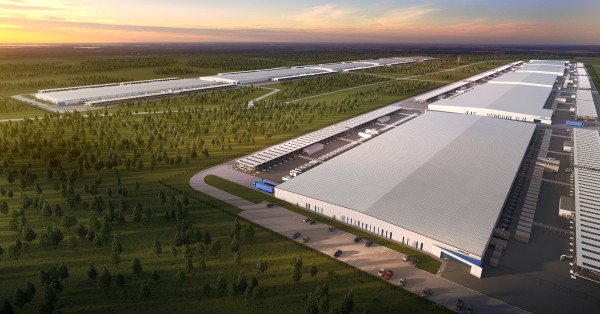Automating Private 5G Deployments with Seamless Security Integration
The demand for private LTE and 5G networks is growing rapidly as enterprises across industries embrace digital transformation. However, large-scale SIM-based device rollouts present challenges in onboarding, authentication, and security enforcement. To address these issues, OneLayer has announced a strategic integration with Palo Alto Networks, a global leader in cybersecurity.
This collaboration enhances Zero Touch Provisioning (ZTP) by combining automated onboarding with Zero Trust security, enabling enterprises to deploy and manage private cellular networks with greater efficiency, security, and scalability.
Overcoming Security & Scalability Challenges in Private 5G
Enterprises deploying private networks face several challenges:
- Complex SIM Provisioning – Configuring SIM profiles for thousands of devices can be time-consuming and error-prone.
- Security Vulnerabilities – Unauthorized devices can introduce security risks if not properly authenticated.
- Manual Onboarding Processes – Traditional onboarding methods require significant manual intervention, delaying deployments.
- Scalability Issues – Managing device authentication, access control, and security policies at scale can be overwhelming.
By integrating OneLayer’s ZTP solution with Palo Alto Networks’ next-generation firewall (NGFW), enterprises can overcome these hurdles and streamline their private 5G deployments.
How OneLayer & Palo Alto Networks Automate Private 5G Security
1. Automated SIM Provisioning & Activation
The process begins with OneLayer provisioning and activating SIM profiles for Palo Alto Networks’ 5G-enabled NGFW. This eliminates manual setup efforts and ensures seamless onboarding.
2. Device Fingerprinting & Security Validation
Before a device is granted access to the private 5G network, it undergoes fingerprinting to verify its authenticity. This step ensures that only trusted devices are allowed on the network.
3. Secure Firewall Registration & Zero Trust Integration
Once validated, the device:
- Registers with Palo Alto Networks’ Panorama, a centralized security management platform.
- Connects to Palo Alto Networks’ ZTP service, allowing automated configuration updates.
This end-to-end security process ensures that all devices are verified, onboarded, and continuously protected from potential threats.
AI-Driven Zero Trust: Strengthening Private 5G Security
With AI-powered Zero Trust security, this integration strengthens private LTE/5G deployments by:
- Preventing unauthorized access through continuous authentication.
- Automatically applying security policies based on device identity and behavior.
- Reducing operational complexity by enabling centralized security management.
“Together with OneLayer, a Private 5G ecosystem partner, Palo Alto Networks is revolutionizing private cellular network adoption by integrating an AI-powered Zero Trust security approach with device provisioning, enabling critical industries to achieve digital transformation,” said Leonid Burakovsky, VP, 5G Security Product Management at Palo Alto Networks.
The Business Benefits of Automating Private 5G Security
- ✔ Faster Device Onboarding – Eliminates manual provisioning, reducing deployment time.
- ✔ Enhanced Security – Enforces Zero Trust principles, securing private LTE/5G networks from unauthorized access.
- ✔ Lower Deployment Costs – Reduces manual setup efforts, improving operational efficiency.
- ✔ Scalability & Flexibility – Enables secure onboarding of thousands of SIM-based devices.
- ✔ Simplified Management – Provides centralized control over network security policies.
“Through our integration, we’re ensuring enterprises can manage their private cellular networks with the same strictness and efficiency as their IT networks,” said Avishag Daniely, VP of Product at OneLayer. “This solution bridges the security gap, providing operational excellence and streamlined management.”
Why Zero Touch Provisioning (ZTP) is Key to Private 5G Growth
As private 5G networks continue to evolve, automation and security will play a pivotal role in scaling deployments across industries such as manufacturing, logistics, healthcare, and smart cities. Zero Touch Provisioning (ZTP) is a critical enabler of this transformation, ensuring that enterprises can deploy and manage devices efficiently without manual intervention.
This OneLayer-Palo Alto Networks integration aligns with industry trends where enterprises seek end-to-end automation, stronger security controls, and faster ROI on private network investments.
Experience OneLayer & Palo Alto Networks at MWC 2025
The OneLayer-Palo Alto Networks integration will be showcased at MWC 2025. Attendees can visit both companies’ booths to experience firsthand how this innovative ZTP integration enhances private 5G security and automation.
For more details, visit:
OneLayer
Palo Alto Networks
Future-Proofing Private LTE/5G with Automated Security
With the increasing adoption of private networks, enterprises must ensure that device onboarding is secure, scalable, and automated. The integration of OneLayer’s ZTP solution with Palo Alto Networks’ security architecture provides:
✅ Seamless provisioning of thousands of SIM-based devices.
✅ Zero Trust enforcement to protect private LTE/5G environments.
✅ Scalable security solutions to future-proof enterprise networks.
This collaboration marks a significant step forward in ensuring that private 5G deployments remain efficient, secure, and ready for enterprise-scale adoption.

































